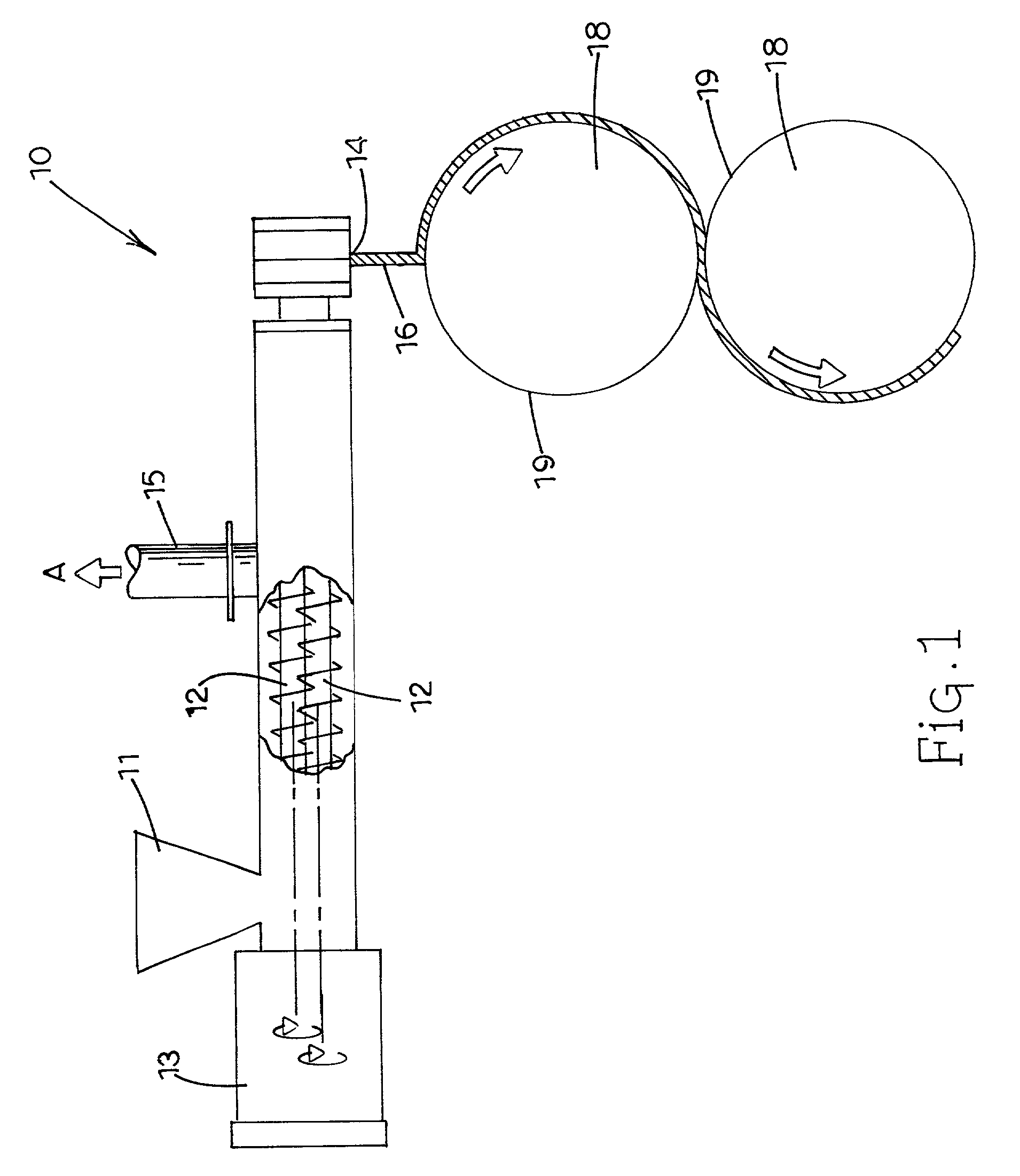Absorbent material of water absorbent polymer, thermoplastic polymer, and water and method for making same
a technology of thermoplastic polymers and absorbent materials, which is applied in the field of absorbent materials of water absorbent polymers, thermoplastic polymers, water, can solve the problems of deflection or termination of the signal carried by the cable, affecting the transmission of fiber optic cables, and moisture is particularly a problem with respect to transmissions through the cable, so as to achieve adequate tensile strength and adequate tensile strength
- Summary
- Abstract
- Description
- Claims
- Application Information
AI Technical Summary
Benefits of technology
Problems solved by technology
Method used
Image
Examples
example ii
[0112] Additional samples of the 4 films from Example I were tested for acquisition of liquid from a reservoir in accordance with the DW test described above, using 4 different liquids, namely DI water, hard water, soft water, and aqueous solution of 0.9% NaCl.
[0113] The following Tables 1A, 1B, 1C, 1D through 4A, 4B, 4C, 4D summarize the results obtained.
8TABLE 1A 10% SAP + 90% EVA (Comparison) Test Solution: DI water; film sample wt = 0.05 g Abs / min (5 min intervals) determined by the difference of blank filter paper and filter paper with film Average absorption of filter paper in DI water is 2.73 g Avg Abs (g / g) Time Absorption (g) Avg Abs (g) Total (min) Abs / min Abs / min Abs / min Abs / min Period Total g / g / min g / g 0 0.00 0.00 0.00 0.00 0.00 0.00 0.00 0.00 5 0.07 0.17 -0.04 0.03 0.06 0.06 1.15 1.15 10 0.02 0.01 0.02 0.02 0.02 0.08 0.35 1.5 15 0.01 0.02 0.02 0.02 0.02 0.09 0.35 1.85 20 0.02 0.01 0.02 0.04 0.02 0.12 0.45 2.3 25 0.01 0.01 0.01 0.02 0.01 0.13 0.25 2.55 30 0.01 0.01 0.06 ...
example iii
[0130] Using a twin-screw extruder with slot-shaped exit openings (as described above vis-a-vis FIG. 1), 4 films of absorbent material were made, each containing the same 50% of sodium polyacrylate fines having a particle size of 50 .mu.m and containing the same 50% of EVA.
[0131] A first and a second film were made, each with a 10 mil (0.25 mm) thickness. The difference was that the first film had an EVA with a HMI of 426, whereas the second film had an EVA with a LMI of 26.
[0132] Then a third and a fourth film were made the same way, but this time each with a 20 mil (0.50 mm) thickness, where the third film had an EVA with a HMI of 426 and the fourth film had an EVA with a LMI of 26.
[0133] The 4 films were cut into samples and tested using the above-described TB test. The results are summarized below in Table A for the 10 mil film samples and in Table B for the 20 mil film samples.
24TABLE A (10 mil thickness films) EVA with HMI 5 minutes Sample Film (g) Wet (g) Absorption (g / g) 1 0...
PUM
| Property | Measurement | Unit |
|---|---|---|
| particle size | aaaaa | aaaaa |
| particle size | aaaaa | aaaaa |
| particle size | aaaaa | aaaaa |
Abstract
Description
Claims
Application Information
 Login to View More
Login to View More - R&D
- Intellectual Property
- Life Sciences
- Materials
- Tech Scout
- Unparalleled Data Quality
- Higher Quality Content
- 60% Fewer Hallucinations
Browse by: Latest US Patents, China's latest patents, Technical Efficacy Thesaurus, Application Domain, Technology Topic, Popular Technical Reports.
© 2025 PatSnap. All rights reserved.Legal|Privacy policy|Modern Slavery Act Transparency Statement|Sitemap|About US| Contact US: help@patsnap.com


